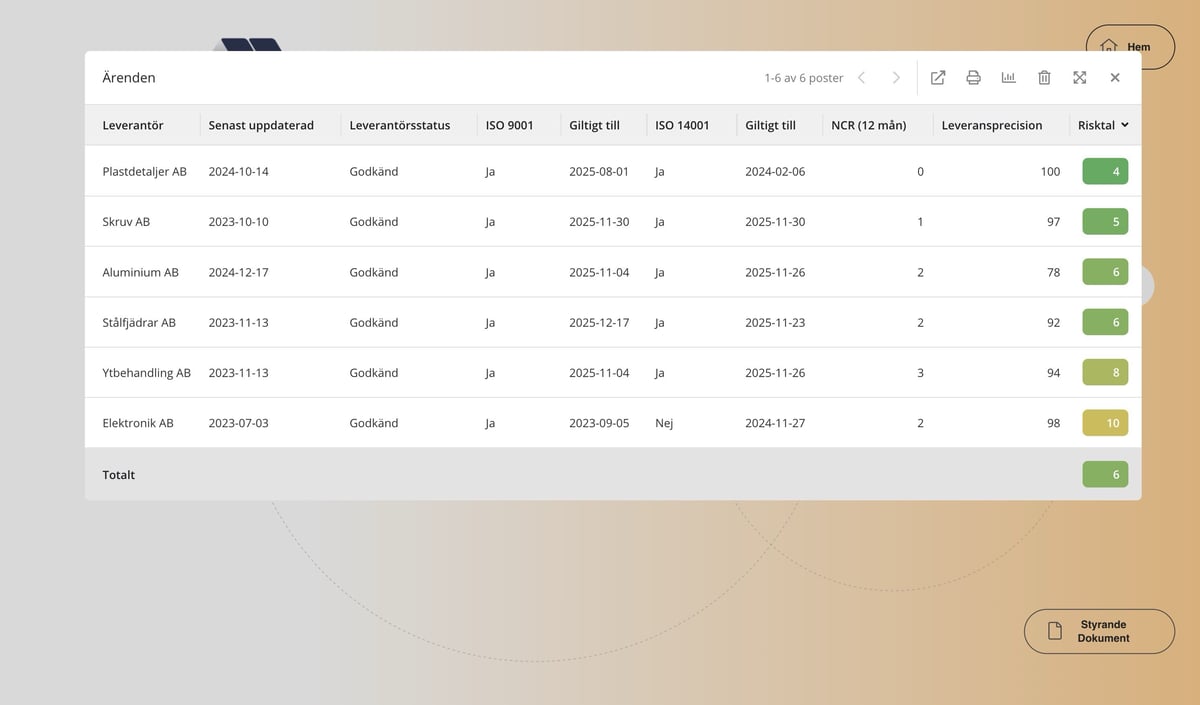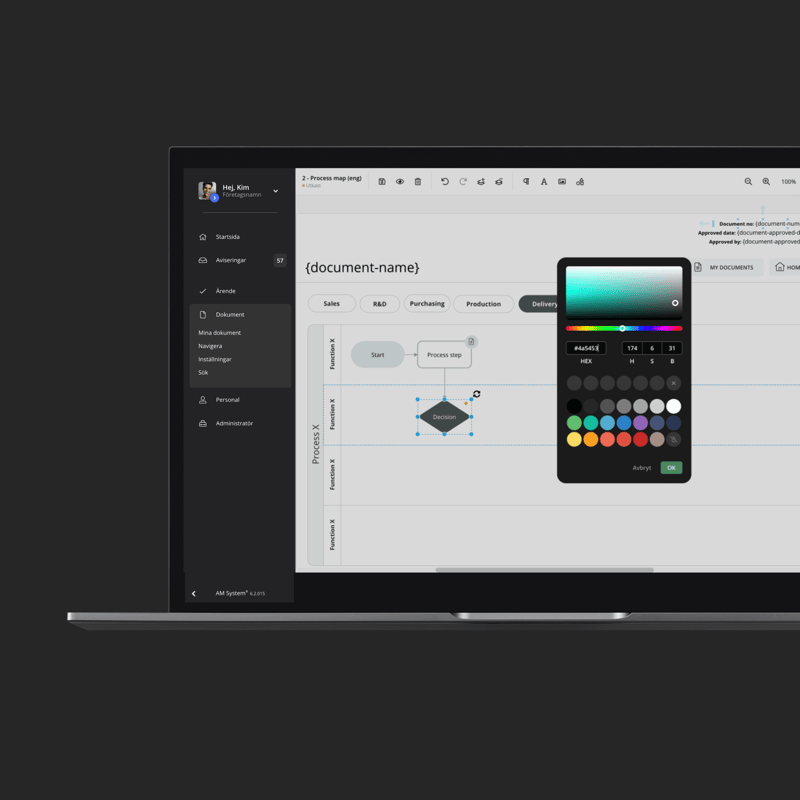Article
Risk management – what is it and how do you do it?
-
 Editorial team
Editorial team
-
- Quality Management System
- 2 min reading

What is risk management?
Risk management is a systematic process of identifying and managing risks that could adversely affect a business. It aims to reduce the likelihood of unwanted events, limit unwanted events and their consequences, and protect the resources and values of the business.
Why is it needed?
All organizations face risks, regardless of their industry or size. These range from internal process failures and skills challenges to external threats such as new regulations, supplier issues or market changes. Without systematic risk management, threats risk being overlooked or addressed too late - which can lead to costly consequences.
Four benefits of risk management
- Prevent and mitigate risks: By identifying risks in a timely manner, you can proactively take action to reduce the likelihood of them occurring - or limit the consequences if they do.
- Protecting business assets: Systematic risk management ensures that your organization's resources - financial, tangible and intangible - are preserved and put to best use.
- Supporting strategic objectives: clear risk management allows obstacles that threaten the organization's strategic and financial objectives to be detected and addressed before they affect performance.
- Stability and predictability: A digital way of working creates structure, transparency and control, resulting in a more stable business with reduced uncertainty.
Risk management step by step
1. Identify risks
The first step involves systematically identifying and highlighting risks. Here it is important to involve several parts of the business to get a comprehensive picture. This creates a broad basis that makes it easier to detect risks before they develop into problems. Risks can arise both internally and externally - for example, from process failures, resource constraints, skills gaps, supplier dependencies, market changes or new legal requirements.
2. Assessing risks

Once risks are identified, they need to be analyzed and assessed based on two main aspects: probability and impact. Risk matrices are often used to clarify which risks are most critical and require immediate management.
A well-conducted assessment makes it possible to
- Prioritize efforts and resources.
- Differentiate between strategic and operational risks.
- Make decisions based on facts and structure, rather than on gut feelings.
This step lays the foundation for risk management that is not only reactive, but also proactive.
3. Mitigate risks
The third step is about taking action. Here, the organization decides which risks to reduce, eliminate or accept. Actions can be for example:
- Process improvements: standardizing ways of working to reduce variation and uncertainty.
- Training: increasing the skills of employees to reduce human error.
- Technology solutions: introducing digital systems that provide better control, traceability and automation.
- Business continuity plans: creating action plans for how the business will act if a risk occurs.
4. Follow-up
Risk management is never finished - it needs to be continuously monitored and developed. Follow-up ensures that the measures have had the desired effect and that the risk level has been reduced. It also makes it possible to detect new risks in time and adjust processes when conditions change. With AM System's digital tools, monitoring becomes both easier and more traceable, providing a solid foundation for continuous improvement.
Manage risks effectively with AM System
With risk management in AM System, you get a tool that creates structure, overview and control over the entire risk process - from identification to follow-up. Through safe and transparent management, you can strengthen the resilience of your business and contribute to long-term success.
With a digital risk management tool in AM System, you get:
- Early insights: Identify risks before they affect your business.
- Reduced costs: Avoid financial losses linked to interruptions or non-compliance.
- Stable operations: Ensure continuity even in case of unforeseen events.
- Better decision-making: Get a clear overview and make informed decisions.
- Increased trust: Demonstrate accountability and increase trust with customers, employees and stakeholders.
- Customized workflows: Create risk processes that match your business.
- Integrated deviation and improvement processes: Link risk management to other aspects of quality management for a holistic solution.
- Secure documentation: All information is stored in a structured way and can be reviewed at any time.
- Easy reporting: Create reports and visualizations that provide a clear overview for management and audits.
- Scalability: Whether you are a small organization or a global group, the system can be adapted to your needs.
Get a demo
Ready to make work easier - and more enjoyable?
Want to see for yourself how AM System can make a difference for you? Book a demo and discover how easy it is to create structure, efficiency, and seamless workflows in your daily operations.
